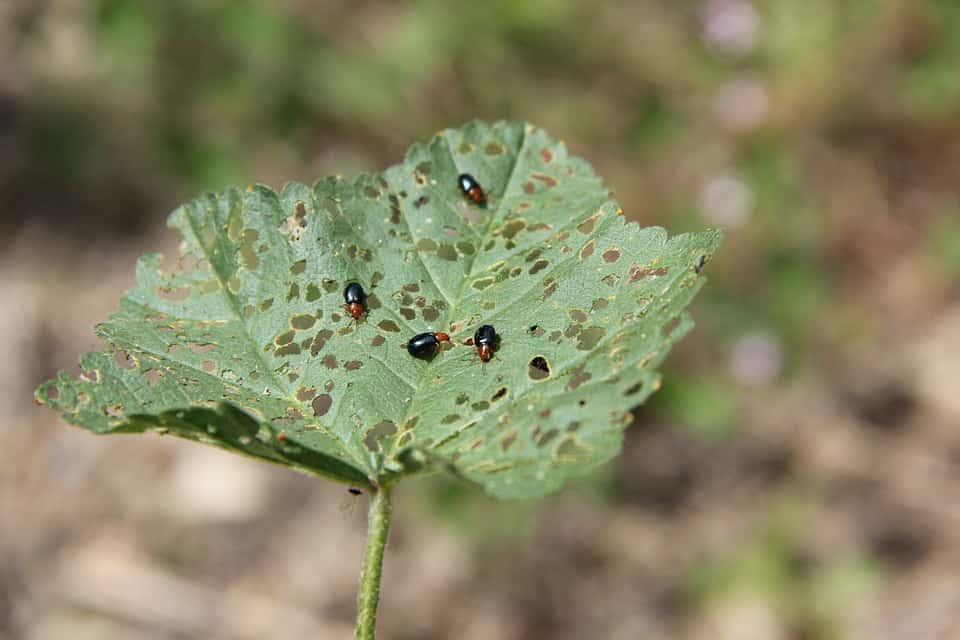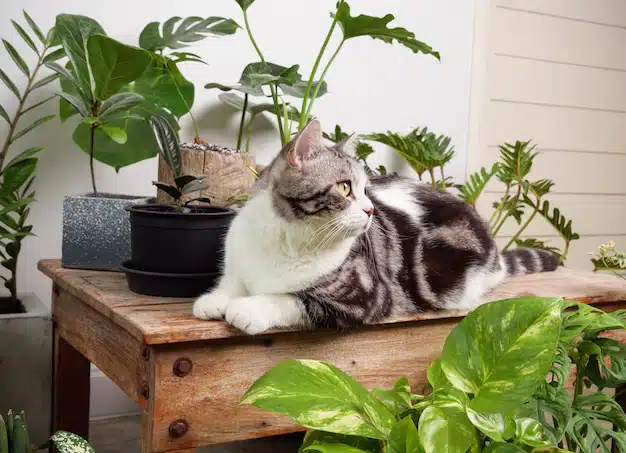Did you know Philodendron means Love Tree?
Philodendron(fi·luh·den·druhn) name is a combination of the Greek words “Philo” which means love or affection, and “dendron” which means tree.
The Philodendron plant is more famous for its large green foliage than its flower. It requires extreme patience, love, and hard work for Philodendron to bloom.
Generally, the Philodendron flowers after the plant matures, i.e., around 10 to 15 years. It will bloom for about two days every summer. However, the plant is easy to grow indoors but difficult to initiate flowering.

Most Philodendron species produce flowers, although they may vary in the time taken for blooming. Philodendron rarely blooms indoors.
However, it is not impossible. Therefore, you should know the best conditions the Philodendron plant needs to influence its blooming.
Read on to discover how to make your Philodendron blossom and take care of its possible daily usage or benefits.
Table of Contents Show
How Often Does the Philodendron Flower?
As the Philodendron is a flowering plant, it indeed does produce flowers. But it blooms only after a decade or perhaps more.
The Philodendron genus has more than 480 species, most of which produce flowers, while some species require longer intensively.
The Philodendron needs to be mature enough to produce its flower; that is why it takes almost 10 to 15 years to produce a flower.
However, once the plant achieves its maturity level, it blooms annually in spring-late spring, from May to July.
Don’t worry if you feel impatient; there is something you can do while waiting for your plant to blossom.

It is possible to increase the chances of your Philodendron flowering indoors by carefully maintaining the different influential parameters at ideal levels.
Unfortunately, the duration of the Philodendron bloom lasting is contradictory to the staggering time it takes.
It is because the flower of the Philodendron plant blooms only for two days.
Also, the number of Philodendron flowers opening during its blossoming period is limited to 2 or 3 blooms.
The time may vary for those blooms to open, so you might be able to see flowers one after another.
Furthermore, it is very rare for some Philodendrons such as P. Micans and P. Xanadu to bloom indoors, but they certainly bloom in wild.
But, trust me, it’s worth the wait as it’s a special feeling to see your hard-worked plant blooming at its finest look.
Philodendron Flower Overview
The Philodendron plant, popularly known as the Love tree, is a tropical flowering plant with big green leaves.
The Philodendron carves its way straight into top indoor plants with low maintenance requirements.

Here is a brief overview of the Philodendron Flowers.
| Factor | Specification |
|---|---|
| Scientific Name | Philodendron |
| Familia | Araceae |
| USDA Zone | 9-11 |
| Flowering Time | May to July |
| Blossom Color | White or yellowish-white |
| Blossom Pattern | The flower has white or yellowish spadix under spathe. |
| Texture | Porous spadix under white softy spathe |
| Fragrance | Strong sweet floral odor |
| Flower Life Span | 2 Days |
| Size | About 12 inches from stem to tip |
| Pollination | Cross-pollination (Hand Pollination for indoor, and scarab beetle at outdoor) |
| Toxicity | Toxic to pets and humans as well |
As the number of Philodendron species exceeds four centuries, there is a large variety of colors.
Most Philodendron plants have varying green shades, while some have pinkish, purple, orangey, and reddish colors.
However, the Philodendron flowers are almost the same in color with a white or yellowish-white spadix and green shaded spathe.
The Philodendron plants do have seeds. So, you can grow these exotic plants from the very beginning.
How do you Pollinate the Philodendron Flower?
The Philodendron plant has separate male and female parts. So, it cannot perform self-pollination and depends upon external pollinating agent such as insects.
The spadix of the Philodendron flower is where both sexual parts are located.
The Philodendron flower produces heat so it can attract its pollinators. Something interesting about the Philodendron flower is it burns fat to produce heat.
Due to the heat radiated by flowers, insects like beetles get attracted, which in turn crawl all over the spadix, causing pollination.
For indoor Philodendron flowers, insects can’t help pollinate. So, you might need to perform hand pollination.

When the flower is ready for reproduction, there is an intense fragrance coming off from the flower. Also, you can see the difference in the looks of the spadix and the heat coming from it.
All you need to do for hand Pollination is simply get up at midnight and rub the pollen on the bottom of the spadix i.e., female part of the spadix.
If you could help your Philodendron flower with pollination, you’ll see fruit with seeds in it after some time.
But don’t get excited and eat it! The fruit of the Philodendron has a high amount of calcium oxalate. So, it is not a good idea to eat it.
The seeds obtained from the Philodendron can be used to grow another Philodendron, but remember, it is a slow and more difficult process than stem cuttings.
How to Make a Philodendron Plant Flower?
Although the time taken for Philodendron to bloom is notoriously long, you can influence the timing by providing the most suitable home for your plant.
First and foremost, brace yourself with patience and then follow the following tips to boost your plant’s maturity,
1. Adequate Sunlight
As you know, the Philodendron plants are popular for their glossy leaves, so you need to know how to keep their charm all the time.
Generally, the Philodendron thrives when placed in an indirect sunlit place.
Even though they are fine staying in a less bright place, it causes a very slow growth of your plant. And we do not want that do we?
So, try finding the optimal place with an adequate indirect sunlit place for efficient growth and flowering.
Placing them directly under the sunlight is a big NO-NO. Direct sunlight can burn down your Philodendron plant’s leaves.

If you notice your plant is leaning, has small leaves, and is growing very slowly, then it’s time you either change its location to a brighter place or buy artificial lights.
Also, while maintaining lights, keep your plant’s room temperature at 65°F to 78°F during the daytime and around 60°F at night time.
2. Well-Draining Soil
Just like the lighting and temperature, you need to choose the proper soil for your Philodendron plant to flower.
The Philodendron tends to thrive more in soil (pH of 6.0 to 6.5) that is well aerated and drains fast with moisture retention.
To make a dream soil for your plant, you might need to consider the soil’s nutrient levels, such as Nitrogen, Phosphorus, Potassium, and Magnesium.
For the ideal soil, try combining Orchid bark (25%), Coconut coir (25%), Perlite (25%), Activated charcoal (5%), and worm castings (10%).

If it is not feasible, you can make an alternate soil mixture by adding peat moss (30%), vermiculite (40%), and potting soil (30%).
Also, you can always rely on the ready-made potting soils.
3. Regular and Controlled Fertilizing
Fertilization always remains crucial for plant growth and flowering.
The Philodendron requires NPK (20:20:20) fertilizers once a month to bloom.
Remember to dilute the fertilizer solution by half the recommended dosage with the help of water.
To make your Philodendron mature quickly and bloom fast, try finding fertilizers with a higher phosphorus content. Because phosphorus is vital for plants’ flowering and the flower itself.

However, do not fertilize your plant more often than necessary, as excessive fertilization may murder your Philodendron plant.
There are a variety of suitable fertilizers available for the Philodendron plant, and to make it easier for you, I have listed some of them.
- Jacks Classic (20-20-20) All-Purpose Fertilizer
- Charlie’s Compost
- Schultz All Purpose Water Soluble Plant Food (20-20-20)
- All-Purpose House Plant Food
- Espoma Organic Indoor Plant Food
4. Optimum Humidity
The Philodendron plant loves humidity just the way it loves you.
Generally, the Philodendron prefers humidity of level 70-90% range.
And most of the time, our indoor humidity ranges around 30-50%, which is less than the required level.
So, to maintain the optimal humidity around your Philodendron plant, you might need to consider using a humidity tray with pebbles or growing multiple plants together.
Lastly, you can use a humidifier to keep Philodendron in the best fitting situation to enhance its maturity progress.

5. Give your Philodendron Some Rest
Like the other plants, the Philodendron plant also enters a dormant state during winter.
During its dormant period, you need to understand it grows very slowly.
To help your plant, you need to reduce the watering frequency along with the fertilizer.
There is less chance of soils getting dry, like on summer days, so if you keep the same routine, it may lead to overwatering. And this goes the same for fertilizer as well.

At this crucial time, ensure your plant is getting enough sunlight and is at the proper temperature and humidity.
Don’t lose hope and give up; instead, it’s the time when your plant needs you the most.
So, give extra care and attention to making the healthier conditions so it may bloom soon.
6. Watch Out for Pests and Fungal Diseases
The Philodendron plants are generally strong against diseases or pests.
But sadly, some exceptional pests may harm your plant, potentially causing a delay in the maturity progress.
Generally, aphids, mealybugs, scales, and spider mites are the ones along with leaf spot and blight diseases.

To treat it, you may prune leaves or parts of the plant that are heavily infested and use insecticides as a final call.
Read more to know more about pest identification on leaves and ways to treat them.
What Should you do with Philodendron Flowers?
When the Philodendron eventually blossoms with a unique-looking flower, I think you know what to do without concerning yourself with other details.
After all, you did wait a decade or so to see that mesmerizing flower, did you not?
Furthermore, the Philodendron bloom is short-lived, i.e., just two days, so shed some kindness to those flowers and let them live.
Still, you have two different ways to handle the Philodendron flower as it is your child, and you have the authority.

First, you can take a snap and help it with hand pollination. If you were successful with hand pollination, you’d see its fruit after a while.
Second, you can cut the flower for optimum conditions of its big green leaves as its flower consumes stored fats for the pollination process.
Ensure removing the flower along with the buds using a pruning shear and be careful not to damage other parts of the plant.
Also, remove old and spent leaves and browning foliage on keeping your plant healthy.
Health Considerations to Keep in Mind
The Philodendron plant may add an aesthetic appeal and help purify indoor air, but there’s a dark side you most need to know.
Most of the Philodendron plant species are toxic to your kids and furry animals in your household.
According to ASPCA, the most common Philodendron i.e., the Heartleaf Philodendron plant is toxic because it contains insoluble calcium oxalate.
The ingestion of Philodendron plant leaves, or any part, causes oral irritation, pain, and mouth swelling.

If you suspect your pets consumed the plant, you can notice excessive drooling and vomiting.
Regardless of the amount of consumption, you should seek medical help immediately.
Philodendron poisonings are often not fatal if proper treatment is provided. Additionally, it’s always best to avoid the disaster rather than solve it after it happens.
So, try to place the plant somewhere out of reach from your children and pets. Also, always wear gloves and wash hands after working on the Philodendron plant.
In any case, if your pets eat the Philodendron plant, call the following numbers.
- Pet poison helpline – 1 (855) 764-7661
- American Association of Poison Control Centers – (800) 222-1222
- The Animal Poison Control Center of the ASPCA – (800)426-4435
Editor’s Note
The Philodendron plant has been popular worldwide for its beautiful foliage and lower maintenance requirements.
As most of the Philodendron parents don’t get to see their child blooming, hopefully, you will after following the tips I have shared.
Have patience and keep growing with your plant to enjoy the blooming one day. Good Luck!!
